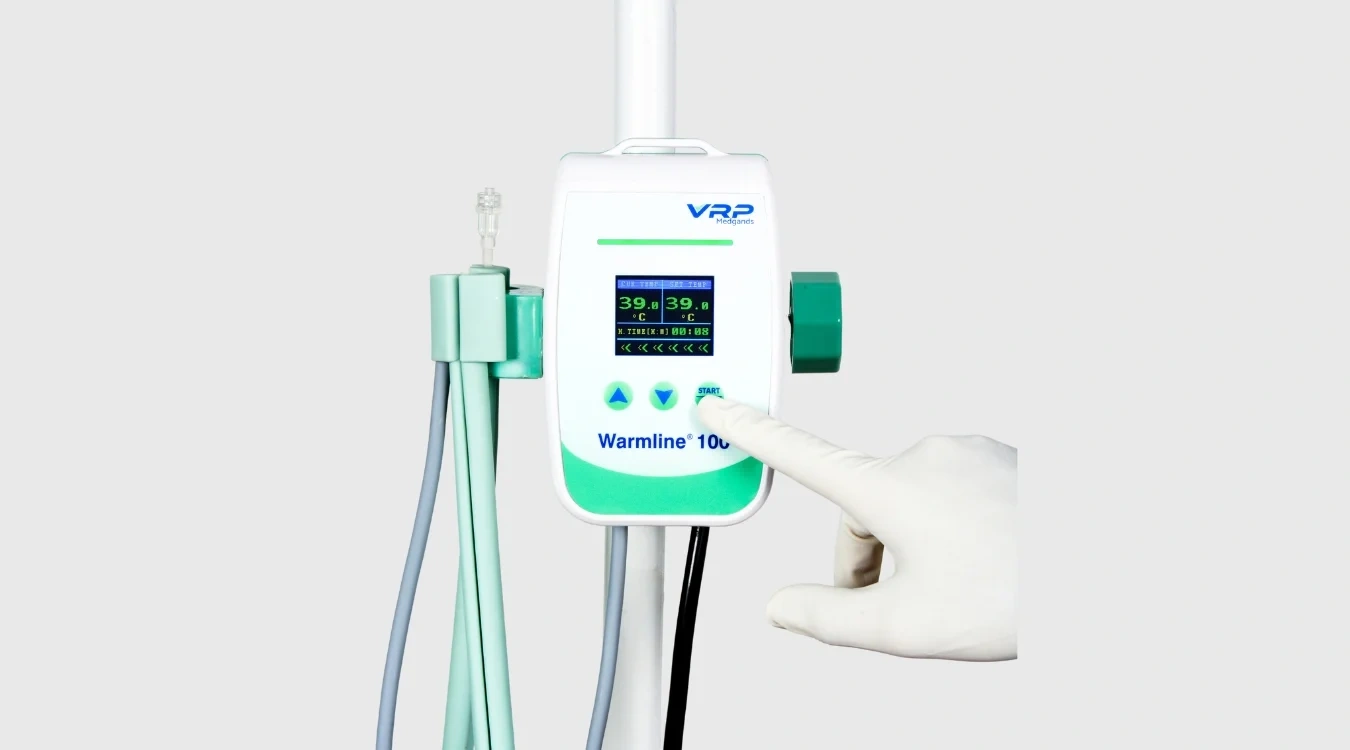
1. Tiny Warmers for Anywhere: The Portable Blood Warmer Revolution
Imagine a blood warmer that you can fit in a backpack but that can warm up blood super fast! That’s the big news for trauma and pre-hospital care.
What's the Big Deal? Old fluid warmers were huge and needed to be plugged into a wall in the operating room or ICU. The new ones are battery-powered and weigh about the same as a textbook.
How This Helps Patients:
- • On the Go: Medics in the ambulance (EMS blood warmer) can start giving warmed IV fluids immediately, right at the accident site. Since cold blood causes problems with clotting, using a rapid infusion warmer right away gives the patient a huge head start.
- • Easy Moving: These portable devices make it simple for doctors to keep using the same fluid warming system from the accident scene all the way to the operating room.
2. Smart Warmers That Record Everything: Welcome to Data Logging
The newest IV fluid warmers are basically mini-computers. They connect to the hospital network and track all the details!
What's the Big Deal? These smart systems now handle data logging automatically. The machine records the exact second the warmed IV fluids were given and the exact temperature.
How This Helps the Hospital:
- • Super Proof: Hospitals have rules (called IV fluid warming guidelines) about keeping the patient at the right temperature (this is called normothermia management). The smart warmer sends the proof to the computer automatically. No more messy papers!
- • Remote Alerts: If the fluid warmer is low on battery or has a small problem, it can send an alert to a nurse's tablet. This means nurses can focus on the patient instead of constantly watching the machine.
3. The Dry Heat Fluid Warmer is Cleaner and Safer
Older systems sometimes used warm water to heat the tube carrying the blood. That could get messy and was hard to keep clean. The future is dry heat!
What's the Big Deal? The new dry heat fluid warmer technology uses clever heating elements (sometimes called a type of silicon heating technology) that clamp directly onto the disposable fluid warmer system tubing.
How This Helps Patients and Doctors:
- • Perfect Temperature: The dry heat spreads perfectly evenly. It warms the blood transfusion without creating "hot spots" that could hurt blood cells. This is perfect for perioperative warming, where every detail matters.
- • Zero Contamination: The parts that touch the blood or IV fluid are always disposable, meaning you throw them away after use. This makes them much safer and easier to use in a busy trauma or operating room setting compared to the old systems, like a large fluid warmer cabinet.
- • High-Flow Ready: Even when a patient needs a high-flow blood warmer to push fluids really fast, these new systems can keep the temperature perfectly at 37°C (the perfect body temperature).
Asked Questions
1. Why is warming blood and IV fluids so important in critical care?
Because waiting takes too long! When someone is badly hurt, they need blood right now. If the doctor gives them blood that’s been in the fridge, the patient's body temperature drops, which can make their injuries much worse. The blood and fluid warmer stops this from happening instantly.
2. What is the main difference between older fluid warmers and the new 2025 technology?
The best ones are the ones that use precision dry heat technology (like the silicon plate ones). They are better than the old water-bath systems because they heat more evenly and quickly, and they don't have messy water to deal with. Plus, the smart ones that connect to Wi-Fi are the best because they handle all the boring paperwork automatically!
3. What does "Data Logging" or "Connectivity" mean for a blood warmer?
Data logging is when the blood warmer is smart enough to be its own note-taker. It records the temperature every few minutes. It saves this information so doctors can prove they followed all the rules about keeping the patient warm. It helps keep the care safe and correct!
4. Are portable blood warmers safe for high-flow trauma situations?
Yes! The best part of the new portable blood warmers is that they are built for speed. If a trauma patient needs a ton of blood really fast, these new battery-powered warmers can keep up and make sure every drop is at body temperature.
5. How often do the disposable sets need to be changed?
No way! The tube and cassette that the blood touches are always single-use (meaning you throw them away). This is super important to make sure no germs or leftover blood ever get mixed up between different patients. It’s for safety and being super clean!